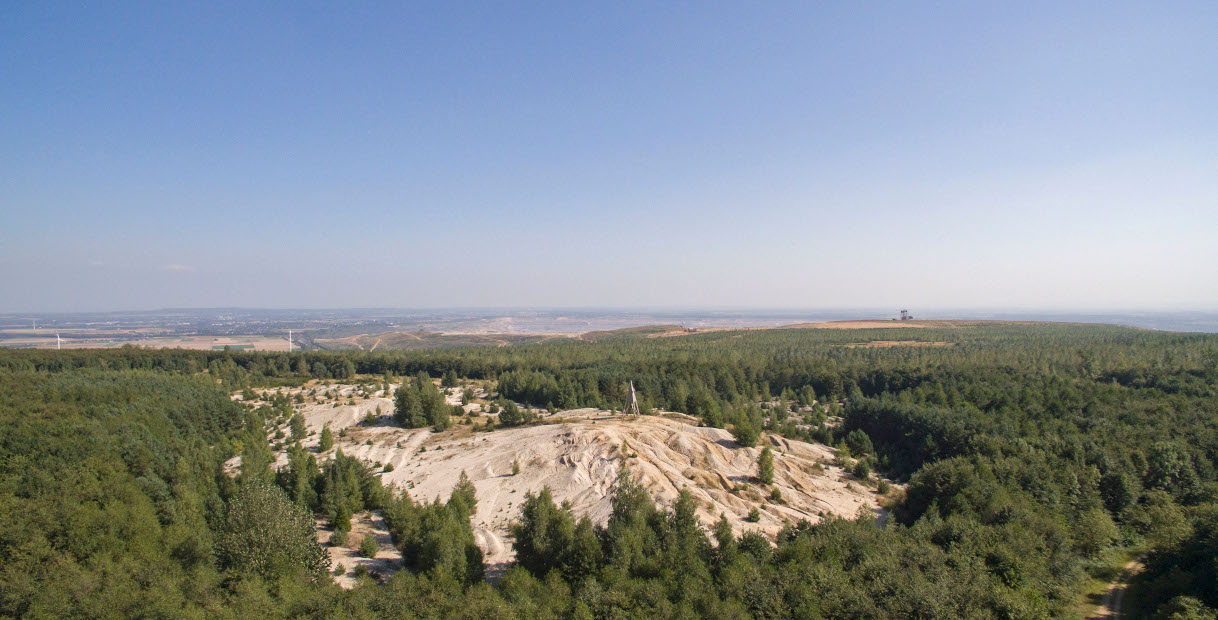Special sites are areas that are not subject to the primary goals of rehabilitation, such as agriculture and forestry, but also permit other objectives, especially nature conservation. They include bodies of water, arid habitats, wetlands and areas that are not used commercially, such as meadows and succession areas. According to the recultivation directive, substrates other than loess, loess loam and Pleistocene bench gravel can also be used in small areas. Smaller special sites are therefore created in recultivated areas in addition to agricultural and forestry recultivation. These sites exhibit extreme characteristics since they are created using special substrates. They are particularly arid, wet, nutrient-poor or steeply sloped. Such habitats only occur rarely in our cultivated landscape. They set themselves apart as hotspots of biodiversity, providing a refuge for many rare animal and plant species. Low-sorption quaternary gravel and sand is often dumped, for example, to create nutrient-poor, dry, warm special sites. Pure clay or silt is dumped to create wet-dry habitats with small ephemeral bodies of water, pools and ponds.
A selection of special sites in the recultivation of the Rhenish lignite area is presented below.
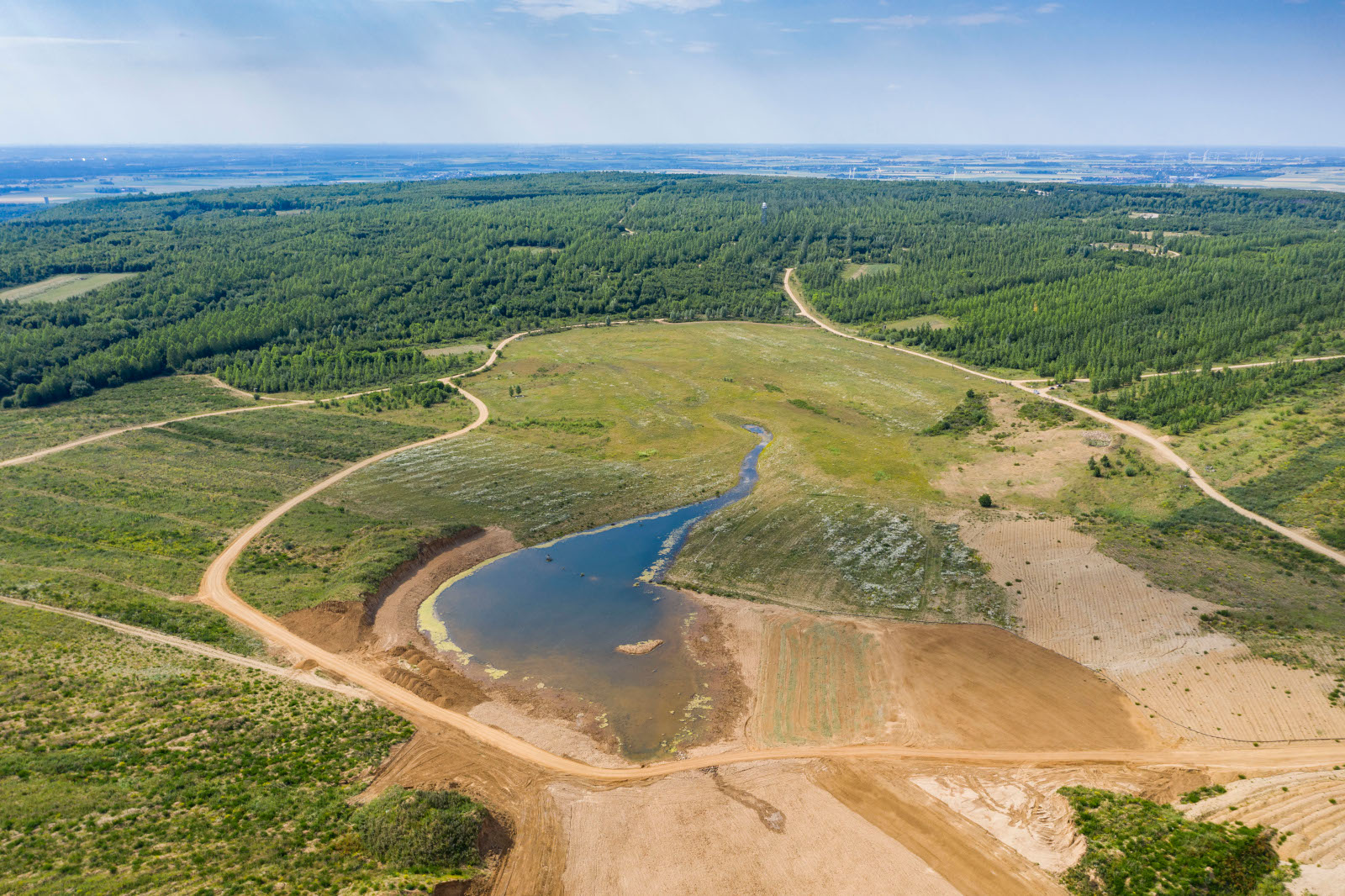
Hambach recultivated area: Goldene Aue
An open area approximately 50ha in size, called the Goldene Aue, is currently being created on the plateau of the forested Sophienhöhe. It owes its name to the yellow-flowering rattleweed and dyer’s greenweed found here in early summer. As open land with planned extensive pasturing and damp depressions, the Goldene Aue is a biodiversity hotspot. Bodies of water as well as heath landscapes were created here by dumping various substrates with clayey material in the centre of the depression and sandy materials on the slopes. In conjunction with the escarpments, species-rich hayfields and tiered forest edges, the Goldene Aue already provides a broad range of different habitats for numerous rare animal and plant species. Residents include the little ringed plover, natterjack toad and green toad, wood lark, red-backed shrike, meadow pipit, hazel dormouse and rattleweed. Fauna and flora studies are conducted to document the special site’s development. Learn more
The Goldene Aue continues to be enlarged and will extend to the future shore of the Hambach pit lake.
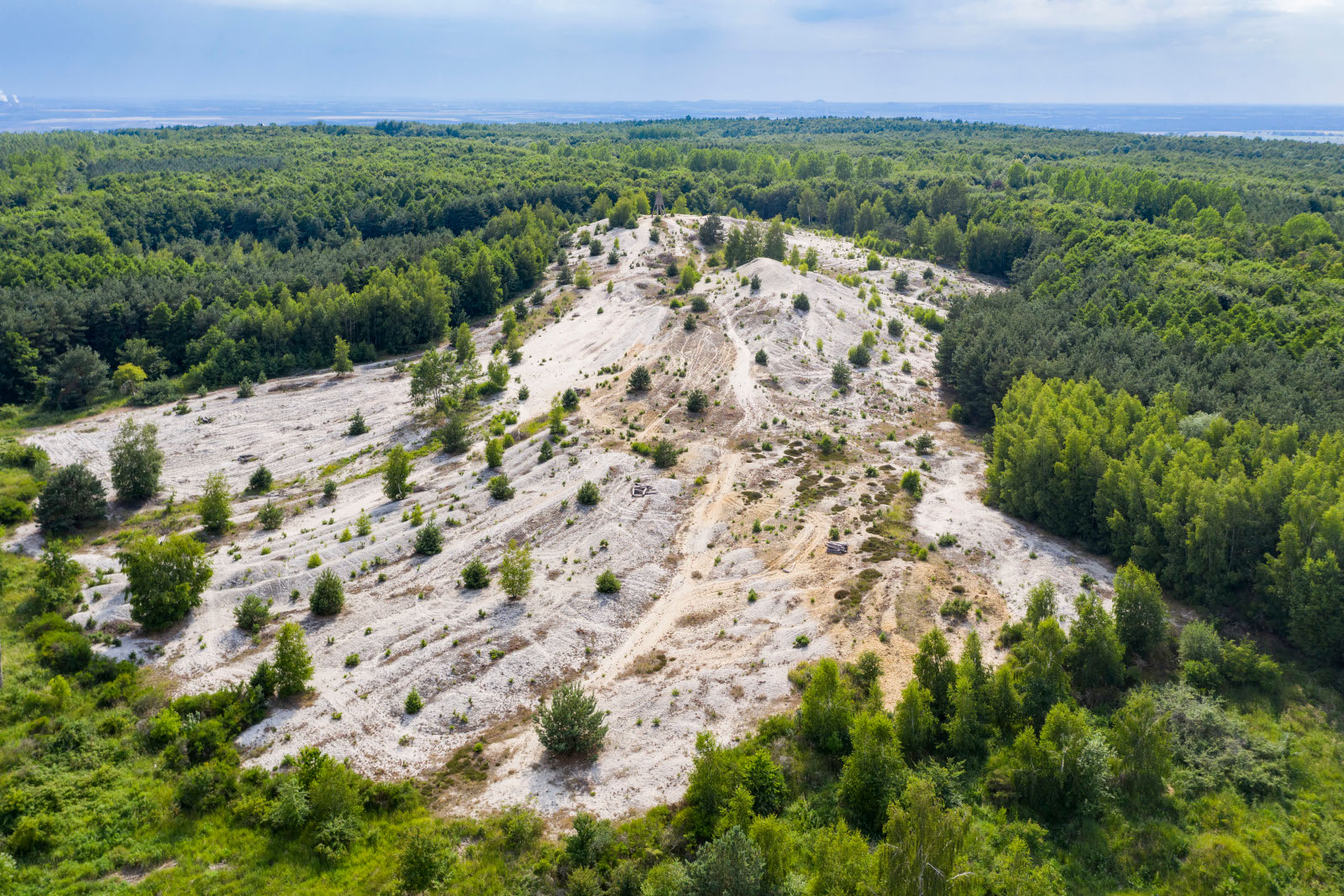
Hambach recultivated area: Höller Horn
Various soil substrates were dumped on the Sophienhöhe in 1990 and left to natural succession. In addition to fractions containing clay and gravel, mainly high-sulphide tertiary sand was dumped in the area of the Höller Horn. These soils are generally very low in nutrients and also highly acidic in the case of tertiary materials. The vegetation is therefore extremely sparse over large areas. Scotch pine and silver birch are gradually establishing themselves but heath areas have developed as well. Since the area was not levelled, a highly varied relief with escarpments, depressions and slopes was preserved here. Specialists such as the sand lizard, blue-winged grasshopper and wild bees are at home in this dune landscape. Native orchids have been found here as well. Fauna and flora studies are conducted to document the special site’s development. Learn more
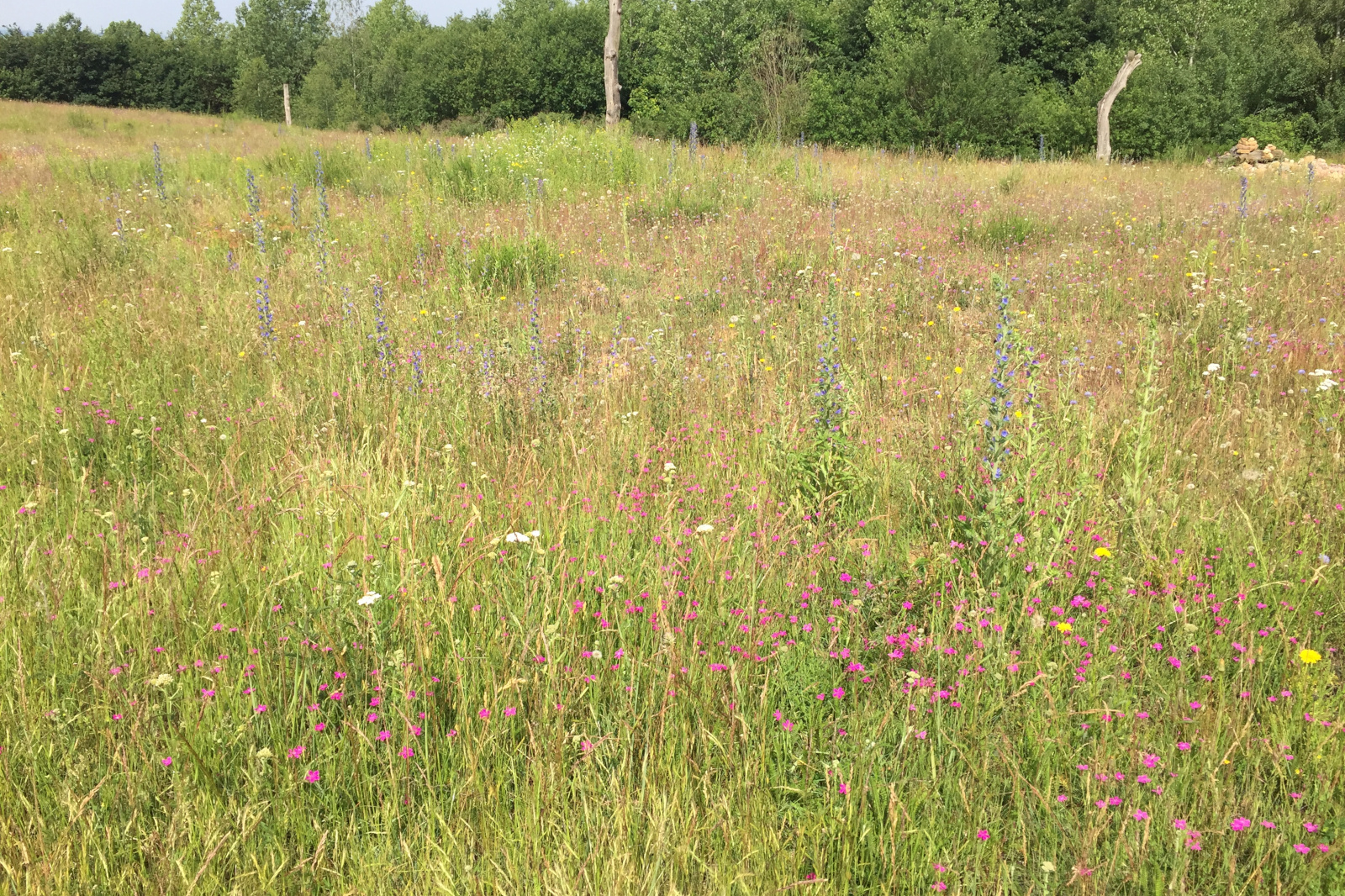
Hambach recultivated area: Silikatmagerrasen (nutrient-poor grassland on siliceous soil)
Materials containing sand and gravel were dumped in the Silikatmagerrasen area, creating a mosaic of scattered, flower-rich stands with large sections of virgin soil and fields of whitish hair-grass. The flowering dyer’s greenweed, wild thyme and sheep’s bit intensify the area’s heath character in midsummer. The nutrient-poor grassland has a very high diversity of species with 70 types of flowering plants. Thus it is no wonder that a large variety of fauna makes its home here with numerous and in part rare animal species. More than 500 different butterfly species have been recorded here alone. Fauna and flora studies are conducted to document the special site’s development. Learn more
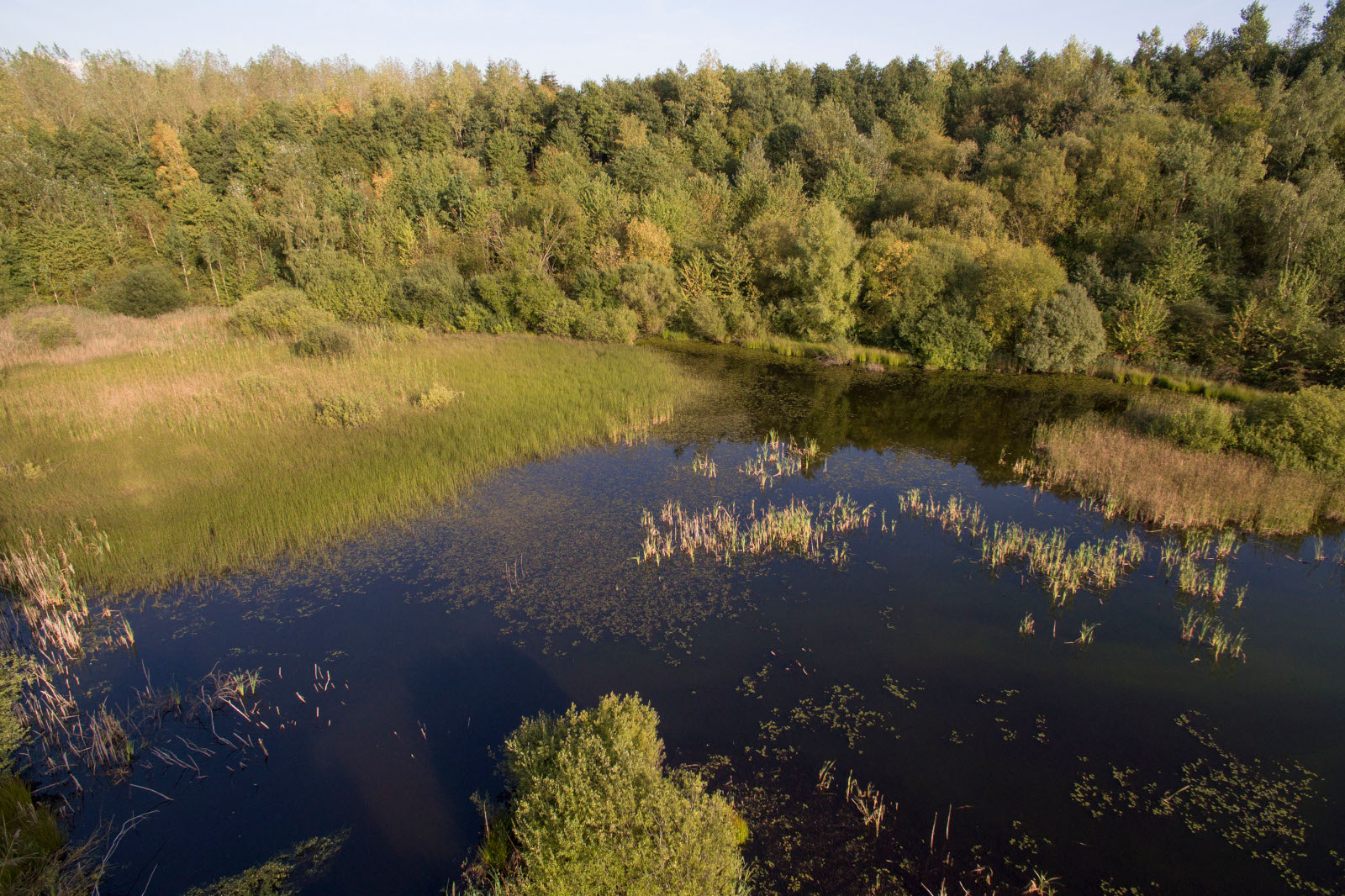
Hambach recultivated area: Eisvogelsee and See Bergmannsruh
The two rainwater retention basins in the east (Eisvogelsee) and west (See Bergmannsruh) of Sophienhöhe heights have developed into mesotrophic ponds with a very well established reed bed, floating leaf plant and submergent plant zone. Pussy willow shrubbery common for local shore areas is found around the pond edges. The reed bed zone is structurally diverse and species-rich. The range of habitats for specialised animal species was selectively expanded, for example, with the installation of nesting aids for the kingfisher found here. Amphibians such as the agile frog, various types of dragonflies and numerous aquatic birds such as the little grebe are found on the bodies of water. Fauna and flora studies are conducted to document the special site’s development. Learn more
The underwater development of the bodies of water is studied as well with the mapping of macrophytes (aquatic plants) by divers.
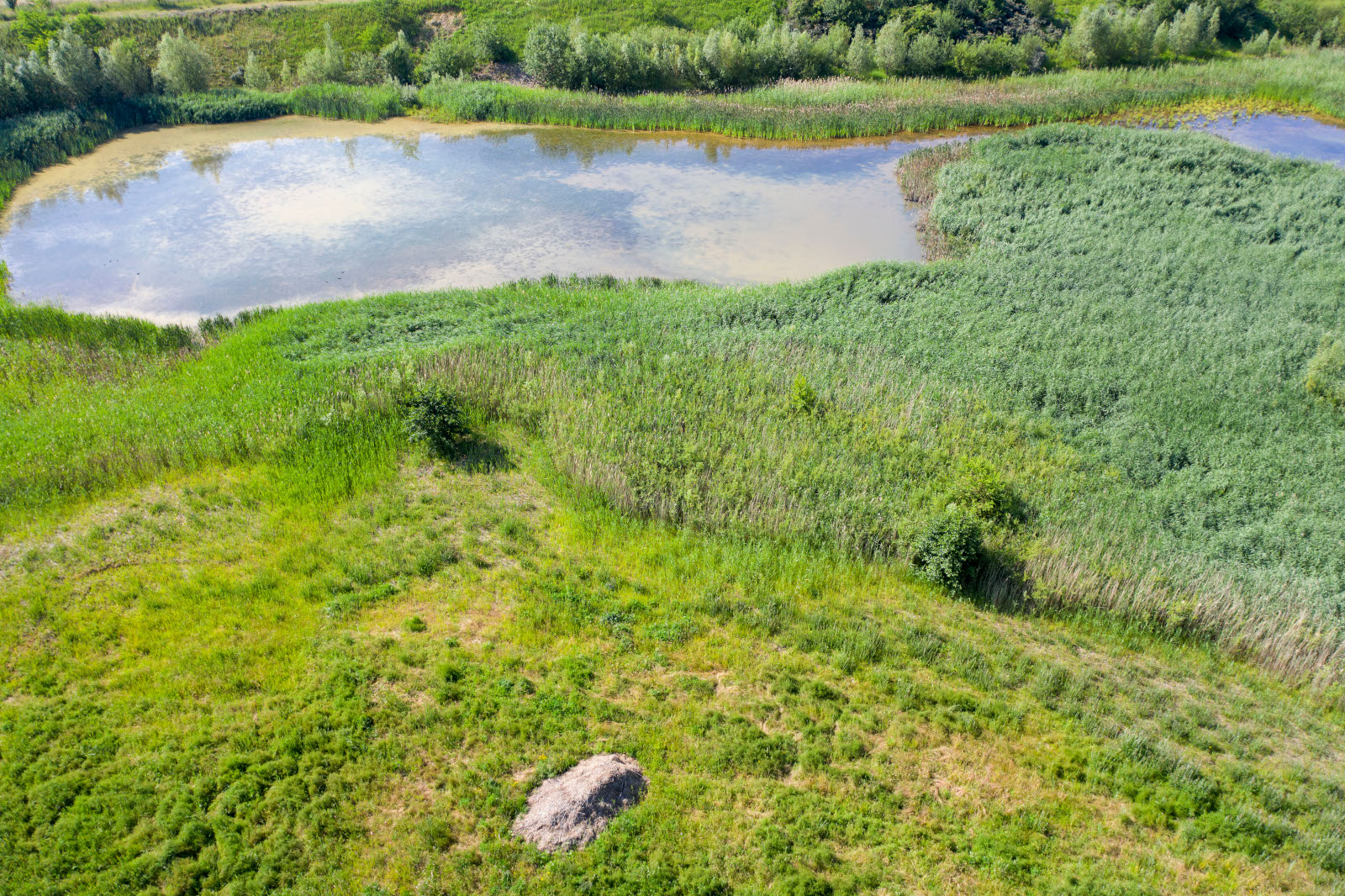
Garzweiler recultivated area: RBS-Becken
The RBS-Becken, a former gravel sedimentation pond of the company Rheinische Baustoffwerke on the Königshovener Höhe, is located in the Garzweiler recultivated area. In the course of the Garzweiler opencast mine’s ongoing recultivation, it has been converted and optimised as a species protection area for pioneer species such as the natterjack toad, green toad and yellow bellied toad. The water level was considerably lowered so that only about one third of the pond area is covered by water. Sandy, nutrient-poor open landscapes are adjacent. Gravel deposits on the slopes and hiding places created by rocks and deadwood further increase the range of habitats. The biotope complex of various extreme habitats that exists here meets the habitat needs of pioneer species in their various development phases. The great reed warbler, marsh harrier and tree pipit feel at home here as well. Fauna and flora studies are conducted to document the special site’s development. Learn more
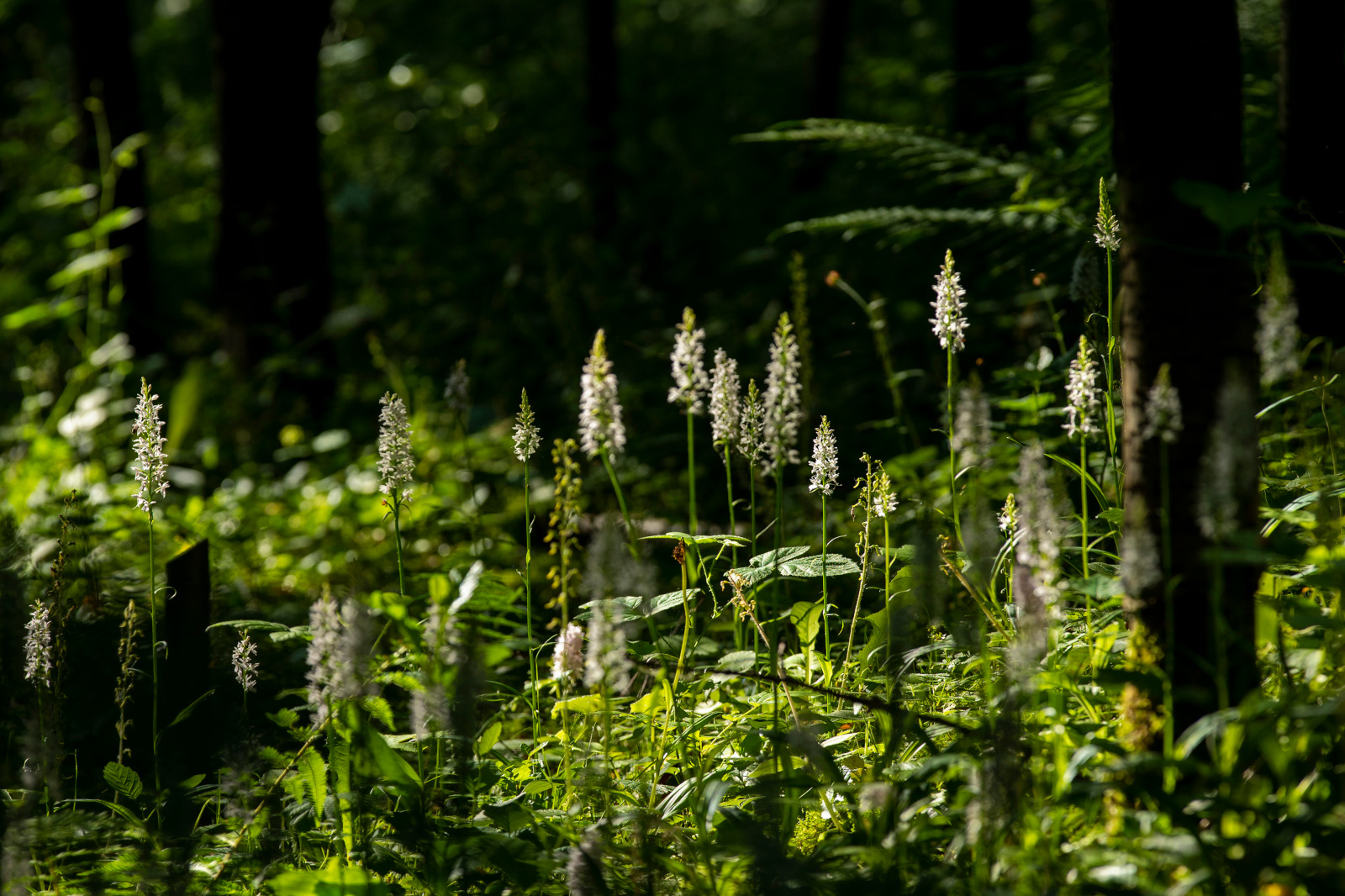
Garzweiler recultivated area: Königshovener Höhe and Königshovener Mulde
The Königshovener Höhe is a hill used for agriculture with slopes recultivated for forestry. Thanks to its high structural diversity comprising flower strips and fields, hedges, fallow land and piles of rocks and deadwood, the plateau provides habitats for numerous open land animal species. In particular, more than 150 types of birds including numerous rare species such as the hen harrier and Montagu’s harrier, short-eared owl, partridge, meadowlark, corn bunting and wheatear have already been documented here. The farm fields are interrupted by the near-natural design of the Königshovener Mulde. Its slopes were recultivated for forestry with nutrient-poor open areas in the basin where species-rich meadows have developed. Nearly 20 native orchids are found here among other things.
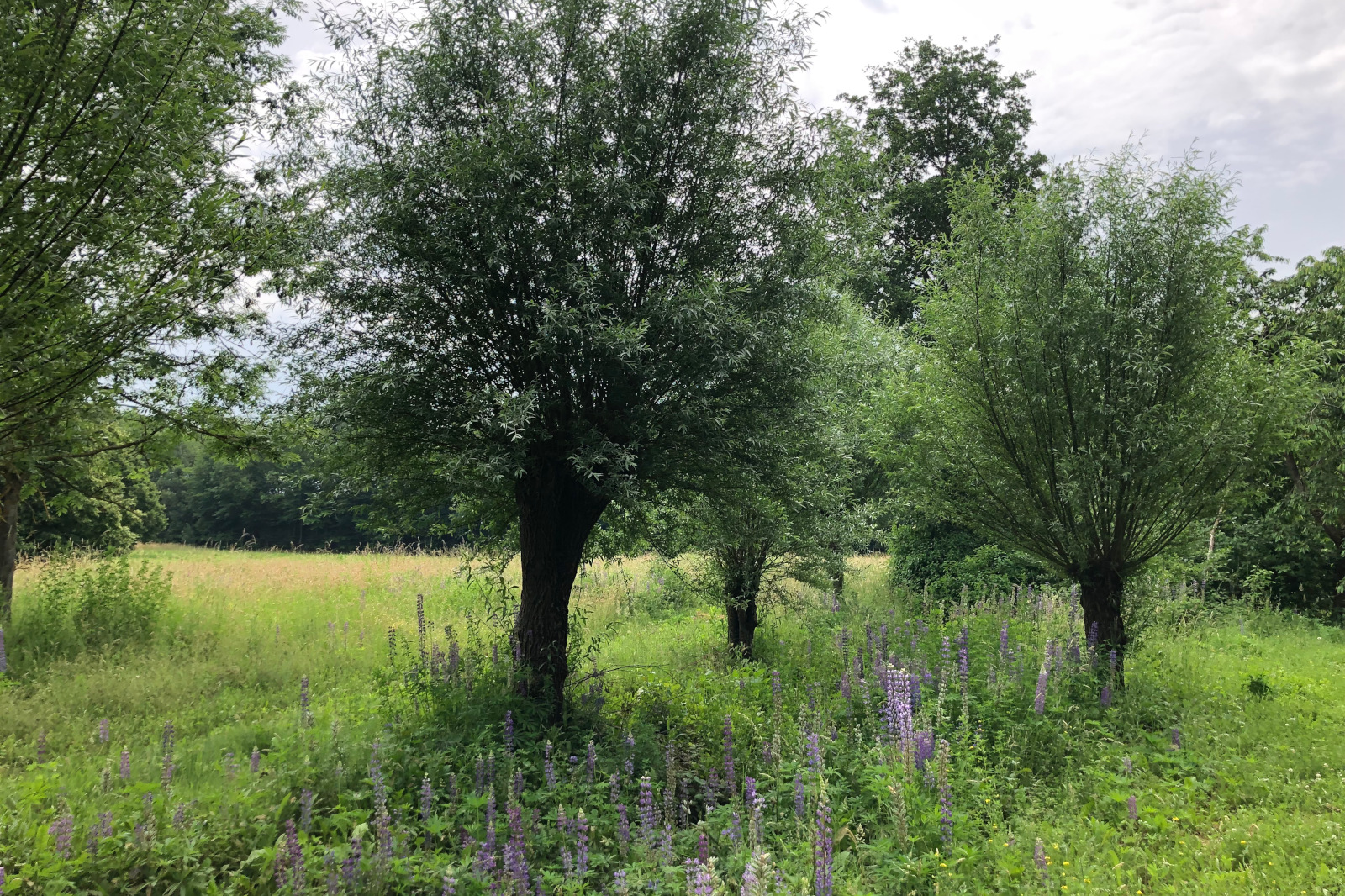
Garzweiler recultivated area: Elsbachtal
The Elsbachtal recultivated area west of Grevenbroich was created as a depression with a diameter of 200m. It connects to the natural Elsbach stream in the east. Rainwater from the adjacent fields recultivated for agricultural use flows into and is discharged through the valley. Like many watercourses in the Börde region, the Elsbach is dry except after particularly heavy rainfalls. Trees have been planted on the near-natural banks and the watercourse lined with alders, ash and pollard willows meanders through the open bottom of the valley designed as a green space with species-rich meadows. Three small bodies of water are also located in this area. The Elsbachtal is a popular local recreation area and also home to numerous rare animal and plant species including native orchids, the tree pipit, hazel dormouse, natterjack toad and green toad. Fauna and flora studies are conducted to document the special site’s development: Learn more
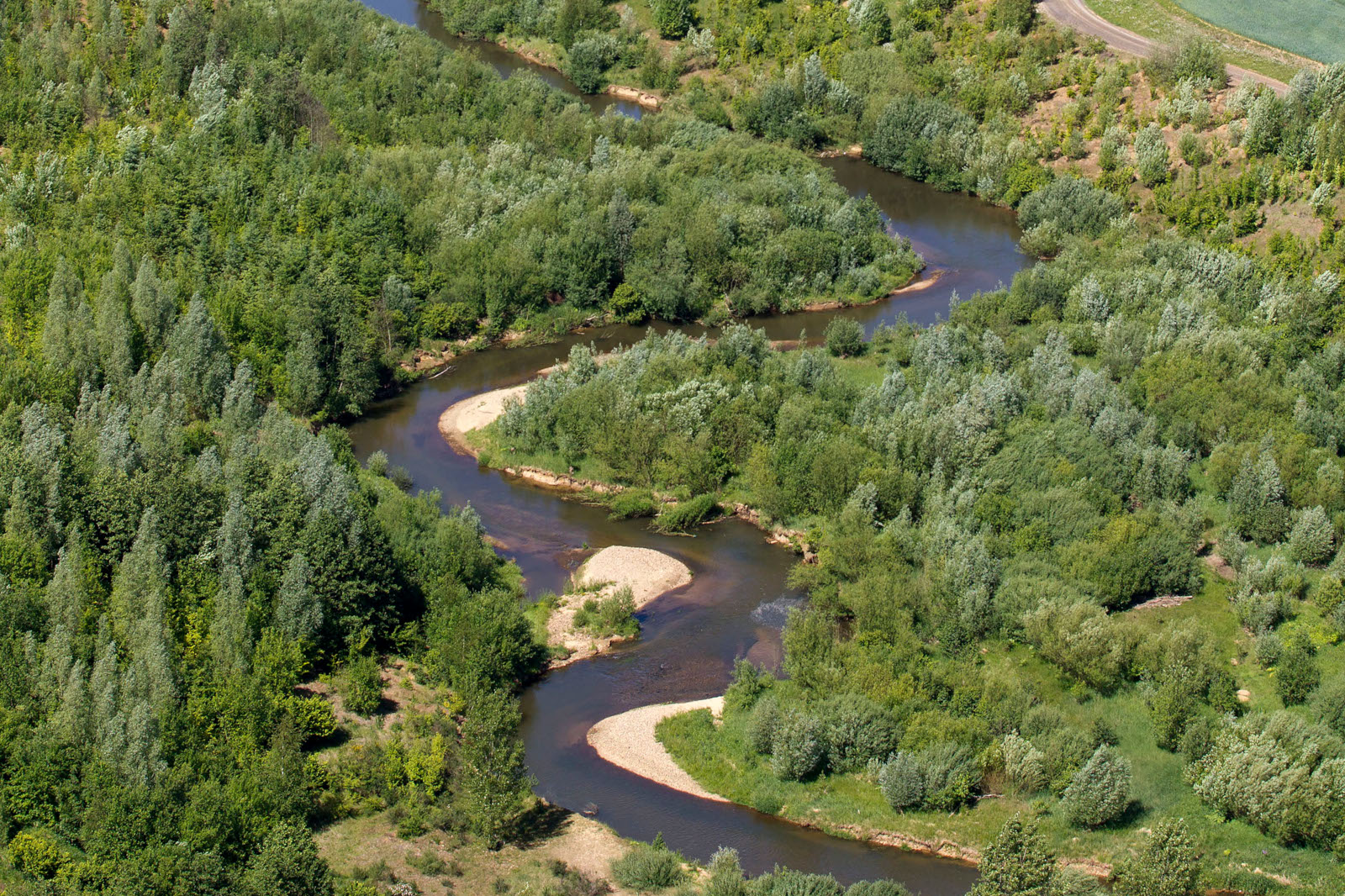
Inden recultivated area: New Inde
As the Inden opencast lignite mine progressed, a section of the Inde river with an original length of about 5km had to be re-routed. Special attention was paid to ecological concerns in the planning of the new section, now with a length of 12km. A new river course in a natural way was designed to enable the largely undisturbed development of the watercourse. Compared to the old, straightened course of the Inde, a meandering watercourse of more than double the length was created with a considerably expanded floodplain, incorporating flat banks, escarpments, wetlands and flood zones. Rare species of dragonflies such as the green snaketail, grass snakes and beavers are at home in this area under the protection of natural processes. Fauna and flora studies are conducted to document the special site’s development. Learn more


